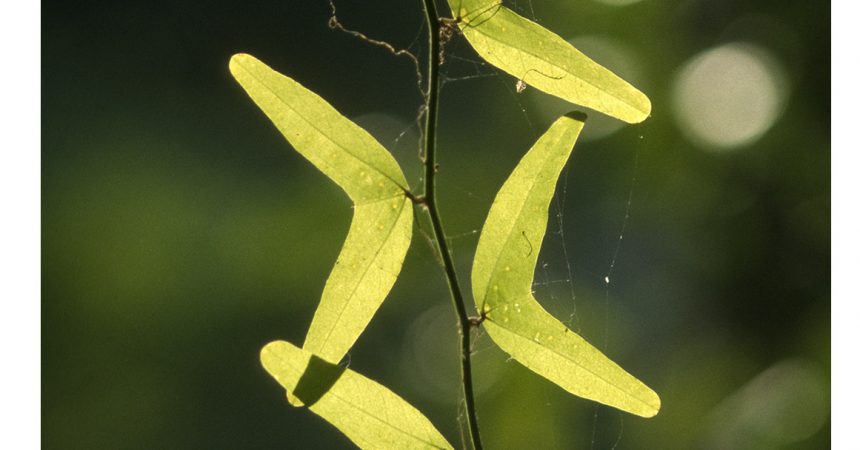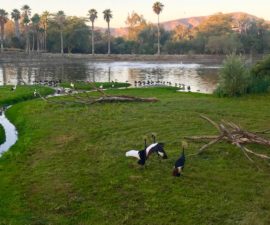Orange kangaroos and lions? Red monkeys? There’s a particularly colorful—and interesting—corner of Nature where flora meets fauna and the result is plants with names that reference resemblances to furry, feathered, finned, and even scaled creatures. Exhibit A: the leaves of the bat wing vine Passiflora coriacea at the top of this story! From alligator tongue to zebra plant, there are many options for growing a backyard “zoo,” and here are just a few.
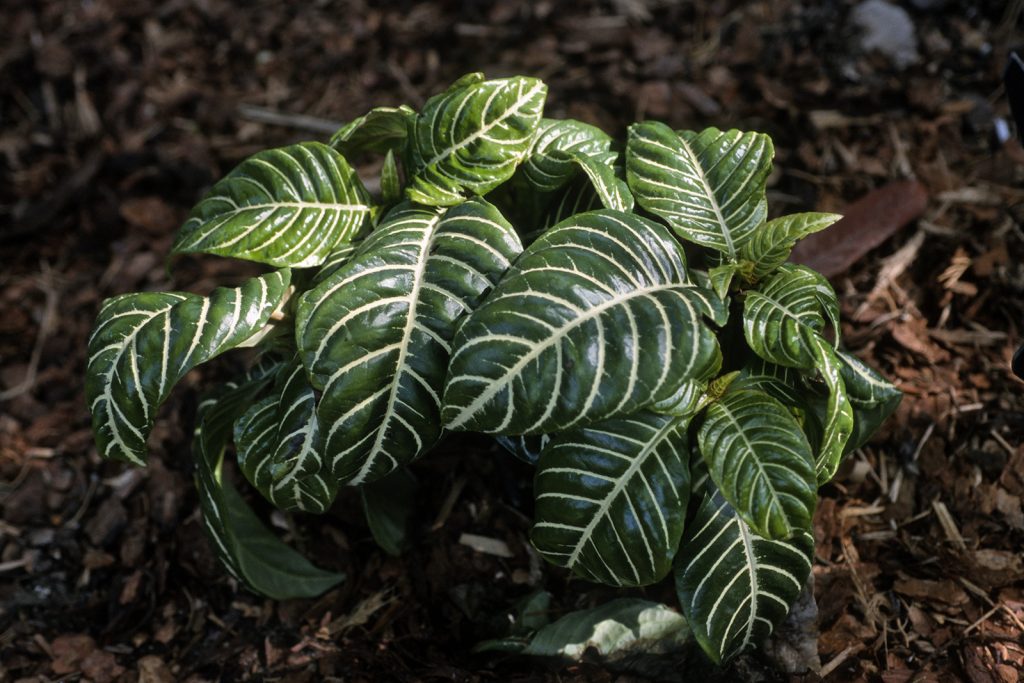
Zebra plant Calathea zebrina
Heads Up
Sometimes the naming inspiration comes from the top (or near the top) of an animal. An elephant ear plant makes a big impression with its giant leaves. But remember: these mostly tropical plants can triple in size, so allow enough space for the whole herd! Succulent-like alligator tongue will give the garden club plenty to talk about with its gray-green and purple speckled foliage. Growing up to six feet tall, goat’s beard, with its cream-colored flowers, makes a nice background plant for shady spots. Looking for botany with bite? Tiger’s jaw’s teeth-like spines and bright yellow flowers give this succulent much to roar about.
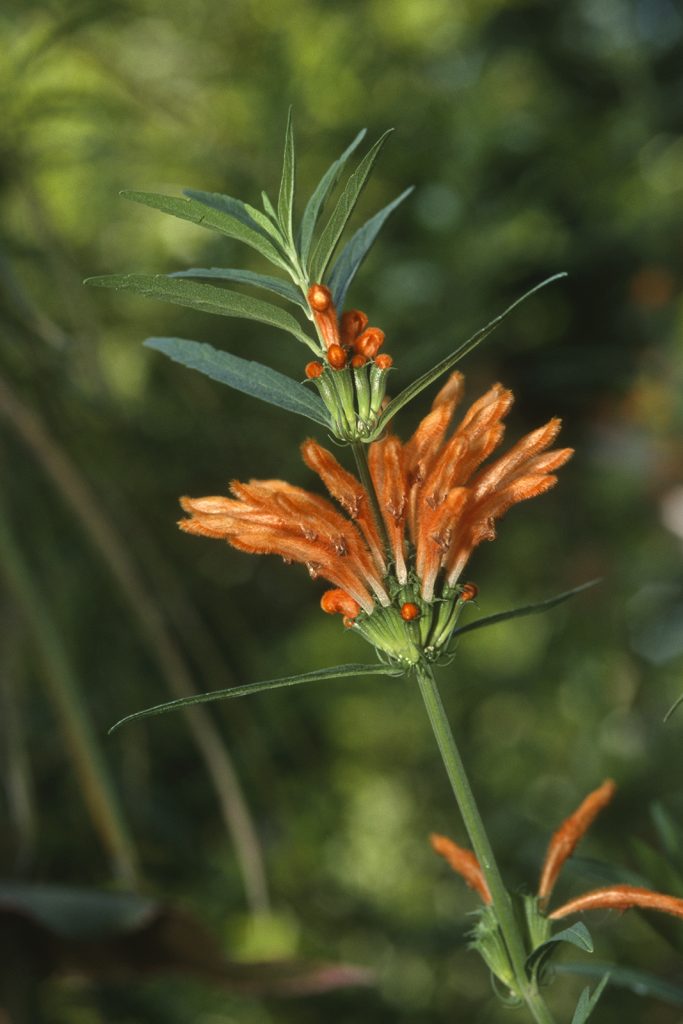
Lion’s tail Leonotis lenurus
From the Bottom
Looking down can have its upside! Need a nice accent plant? A clump of drought-tolerant, perennial bear’s breeches offers shiny green leaves topped by sturdy spires of blue, pink, or white flowers. Maybe you could use a hand with adding color to your garden. The 11 varieties of kangaroo paw can supply splashes of red, pink, orange, apricot, gold, yellow, and green. And lion’s tail offers a lion’s share of appeal: not only does this perennial produce bright, orange flowers that resemble the tuft at the end of the big cat’s tail, these blossoms are particularly attractive to hummingbirds!
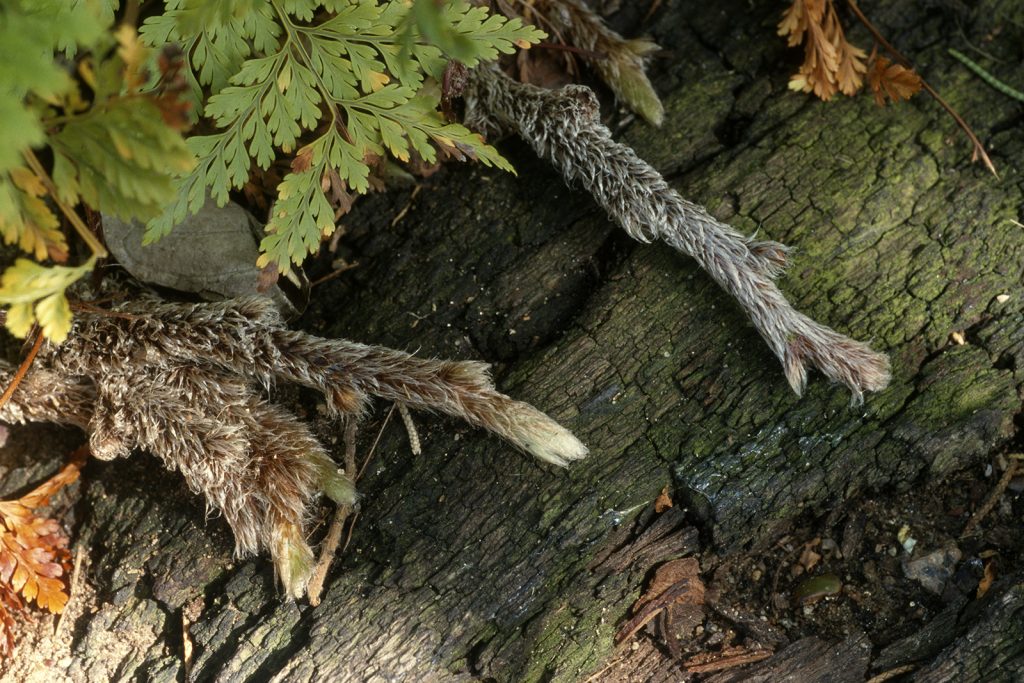
Squirrel’s foot fern Davallia trichomanoides
The decorative squirrel’s foot or rabbit’s foot fern gets its name(s) from the fuzzy, paw-like rhizomes that grow on top of the soil—and sometimes down the sides of the planter. Like most of its user-friendly family, the fishtail fern is a relatively easy keeper and has bright, glossy, leathery leaves and requires less humidity than most other ferns.
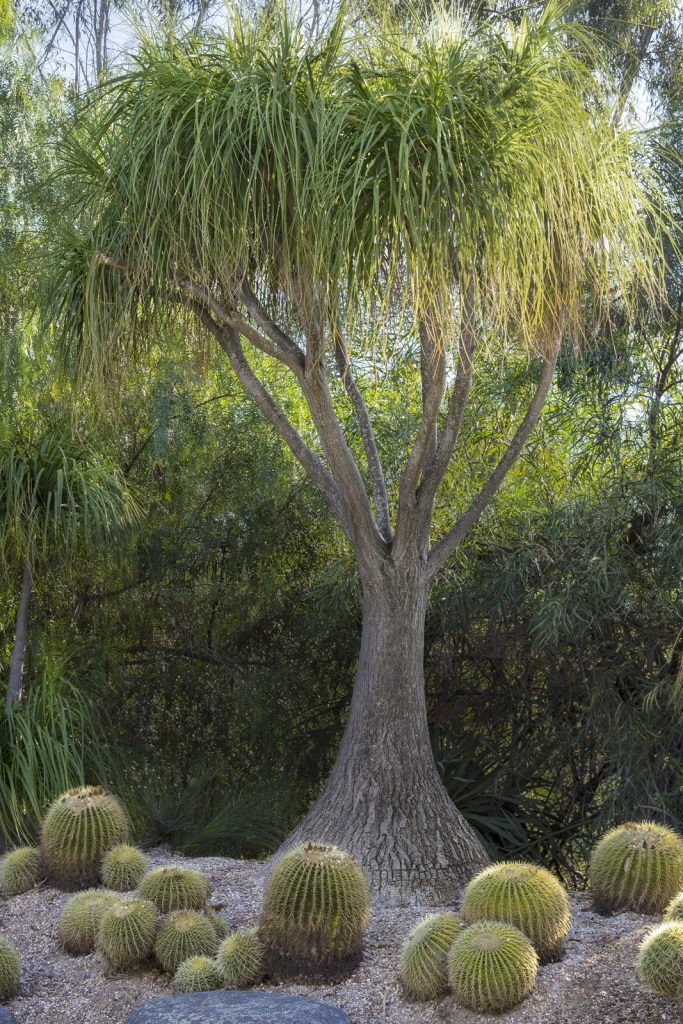
Elephant foot tree Beaucarnea sp.
One plant’s two ends were inspired by two animals’ “ends.” Called either elephant’s foot or ponytail palm, this hardy but slow-growing species is prized for either its spray of strappy leaves or its round-based trunk.
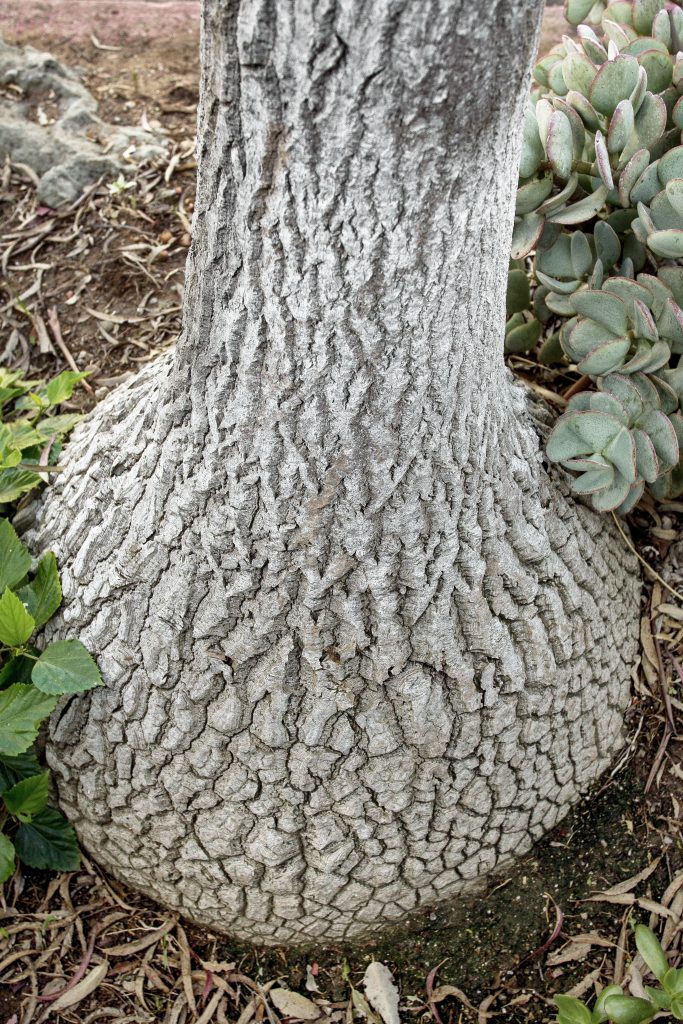
The base of the plant really does look like an elephant’s foot!
All Together Now
In some cases, plants are named for the animal as a whole, even though a certain characteristic is being acknowledged. Ostrich ferns thrive in a wet, shady area of the garden, and get their name from showy plumes that resemble ostrich feathers. And while the elephant tree’s scientific name, Bursera microphylla, means “small leafed,” the emphasis is still on elephant like—this aromatic member of the Frankincense family’s common name refers to its stout trunks and branches.
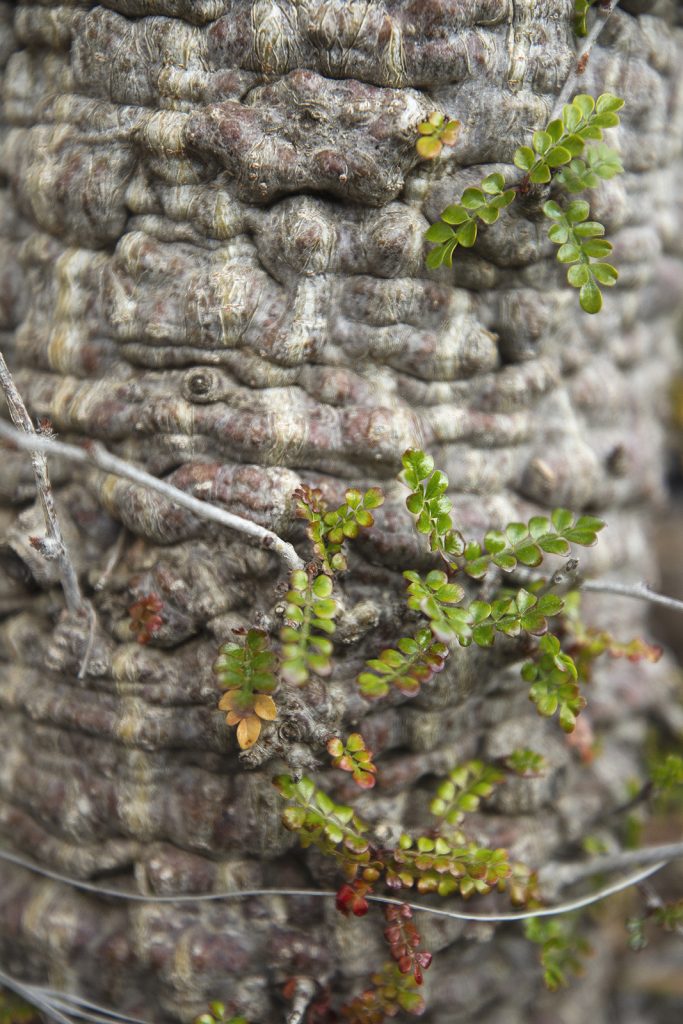
Elephant tree Bursera microphylla
It’s hard to look a monkey flower in its colorful, seemingly grinning face without the plant’s mammalian inspiration coming to mind. This plant’s genus, Mimulus, is named for the Latin mimus, a mime or comedian. That should put a smile on your face! Other choices for an ark-inspired arboretum? Your zany planted zoo can include crab cactus, cowslip, rabbitbrush—just picture your favorite animal and get planting!
Peggy Scott is a associate editor for San Diego Zoo Global. Read another of her stories, Hiss and Tell.

